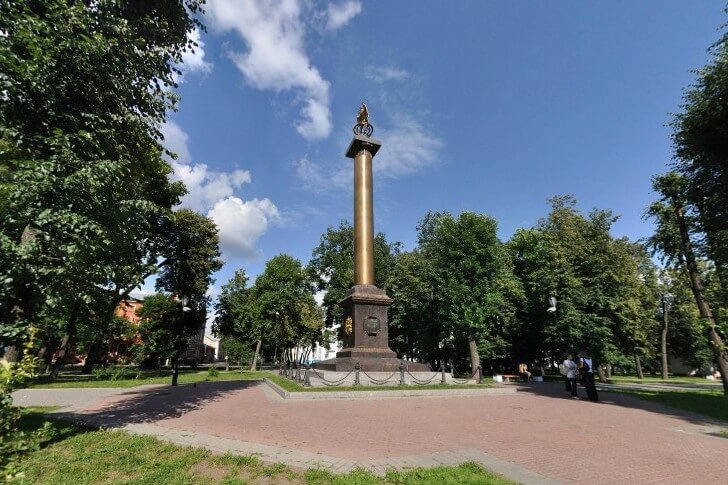Yaroslavl is one of the brightest cities on the famous Golden Ring of Russia route. In 2005, the city center received the status of the historical heritage of mankind and was included in the UNESCO list. Yaroslavl's heyday came in the 17th century. It was at this time that outstanding monuments of urban architecture were created.
The city of Yaroslav the Wise is one of the most popular centers of cultural tourism in Russia. In addition to architectural delight, a trip to Yaroslavl will give you the pleasure of contemplating the picturesque banks of the Volga and the well-groomed embankment, as well as relaxing in numerous city parks and immersing yourself in the history of the once influential Yaroslavl principality.
A trip to the local planetarium or zoo will help diversify your pastime. The Yaroslavl dolphinarium is worth a special mention - the only place of its kind in Central Russia.
What to see and where to go in Yaroslavl?
The most interesting and beautiful places for walking. Photos and a short description.
- Volzhskaya embankment
- Park on Strelka
- Yaroslavl Museum-Reserve
- Transfiguration Cathedral
- Chapel of Our Lady of Kazan
- Church of Elijah the Prophet
- Church of John the Baptist in Tolchkovo
- Assumption Cathedral
- Tolga Monastery
- Kazan Convent
- Vlasievskaya Tower and Znamenskaya Church
- Volga tower
- Metropolitan Chambers
- Governor's house and garden
- Museum-reserve N.A. Nekrasov Karabikha
- Museum of the history of the city of Yaroslavl
- Museum Music and Time
- Russian Drama Theater named after F. Volkov
- Planetarium of the Center. V. Tereshkova
- Monument to Yaroslav the Wise
- Park on Damansky Island
- Yaroslavl Children's Railway
- Yaroslavl Dolphinarium
- Yaroslavl Zoo
- Demidov garden
Volzhskaya embankment
The city embankment was equipped at the beginning of the 19th century after the visit of Alexander I to Yaroslavl. The emperor did not like the unkempt view of the banks of the Volga, and he ordered the allocation of funds for improvement. Since then, the Volga embankment has become a real decoration and the main promenade of the city, kept in order and clean at any time. It stretches along the high banks of the river, from where a picturesque view opens.
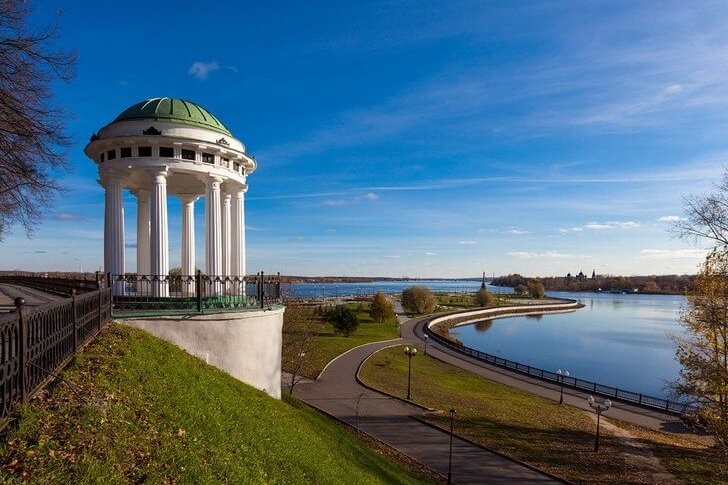
Park on Strelka
City park located at the confluence of the Volga and Kotorosl on a sandy spit. It is a green area with wide walking alleys and recreation areas. The park was ennobled in 2010 to celebrate the centenary of the founding of the city. It is decorated with a monument to the 1000th anniversary of Yaroslavl in the form of a stele crowned with a double-headed eagle. At the base of the obelisk is the figure of Yaroslav the Wise and four other characters, personifying the images of the townspeople.

Yaroslavl Museum-Reserve
The museum complex, which includes several churches, thematic museums, a scientific library, as well as the Spassky Monastery. The united fund of the museum collection contains more than 350 thousand exhibits, among which are valuable icons and manuscripts, household items, church utensils. A separate exposition is devoted to the chronicle "The Tale of Igor's Campaign". The complex was formed in 1924 after the merger of several city museums into a single system.
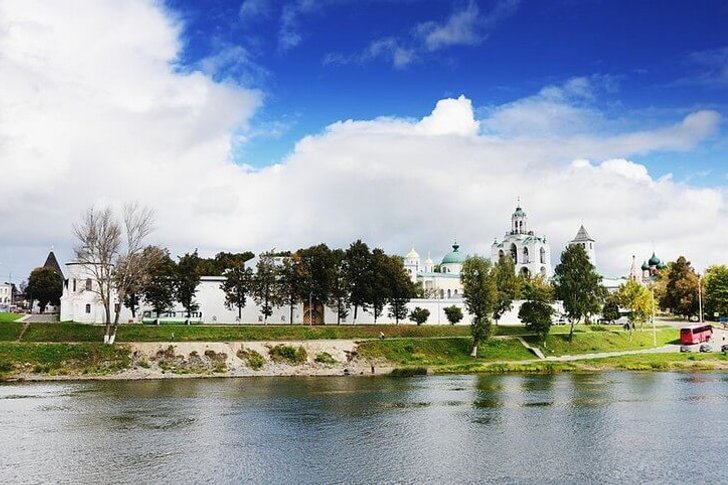
Transfiguration Cathedral
The temple is considered one of the oldest structures in Yaroslavl - its appearance dates back to the beginning of the 16th century. It was erected with the help of hired craftsmen from Moscow, who were sent by Tsar Vasily III, the former prince of Yaroslavl and the current sovereign of the Moscow kingdom. The architecture of the cathedral is characterized by restraint and austerity; there are no unnecessary decorative decorations on the facade. The temple was held in high esteem by the parishioners; Ivan the Terrible visited it on numerous occasions.
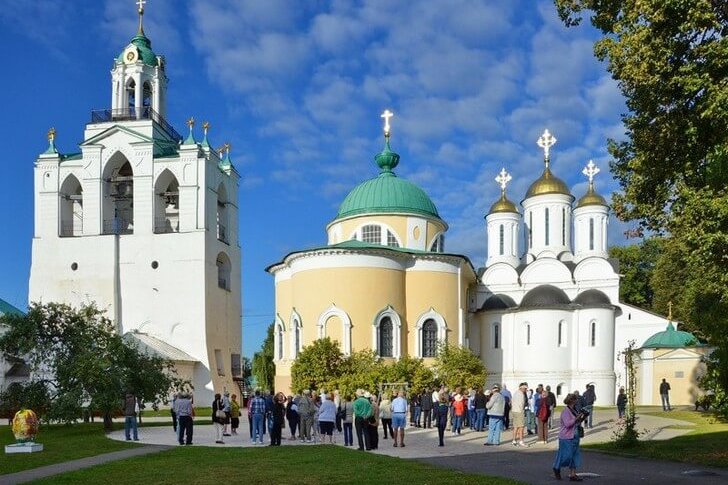
Chapel of Our Lady of Kazan
A small stone chapel built in 1997 near the gates of the Transfiguration Monastery. The monument is dedicated to the exit of the people's militia of Minin and Pozharsky from Yaroslavl to Moscow. As you know, the Nizhny Novgorod volunteers, before going to the capital, took refuge for some time in the walls of the monastery in order to get stronger and gain strength. The chapel was built in the form of an elegant turret, reminiscent of the dome of a hipped church.
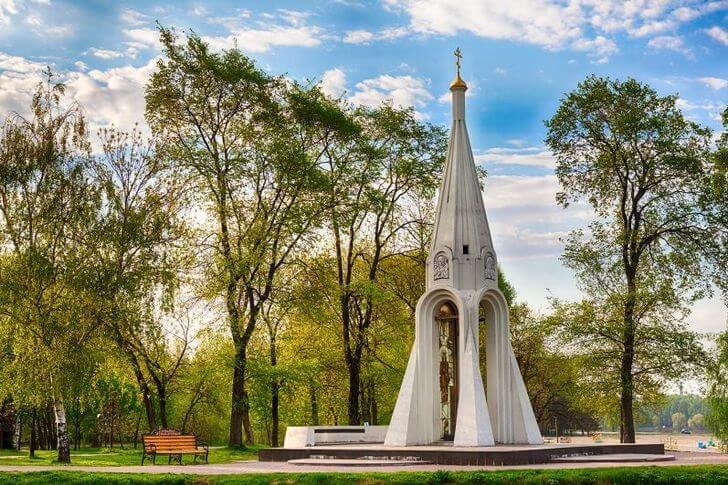
Church of Elijah the Prophet
The temple is located on the central square in the historical part of Yaroslavl. The building is an architectural monument of the 17th century, which has survived intact to this day. The church was built at the expense of the townspeople. A significant contribution to the financing was made by influential and wealthy Yaroslavl merchants - the Skripnin brothers. The temple is distinguished by "smart" architecture and rich interior decoration.
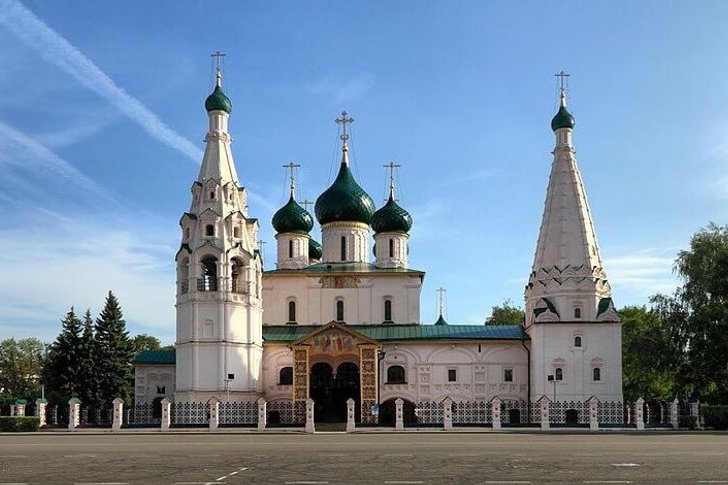
Church of John the Baptist in Tolchkovo
The church is located within the Tolchkova Sloboda, where in the 17th century mainly wealthy Yaroslavl residents lived. Funds for the construction of the temple were donated by the townspeople. People who could not help with money took part in the construction work. The Church of John the Baptist is considered one of the most picturesque in Yaroslavl, as the architects took the best temples of that time as a model, and only advanced methods were used during construction.

Assumption Cathedral
It is generally accepted that the first Assumption Cathedral was built in the 13th century, but in 1642 the building was demolished due to its dilapidation. A few years later, a new temple was erected, but it was not destined to exist for long either - until the fire of 1670. At the end of the 17th century, the building was rebuilt again, but this temple has not survived to this day, as it was blown up in 1937. The modern cathedral on the site of the historical one was built by 2010.

Tolga Monastery
Convent of the XIV century, located in the city of Yaroslavl. The monastery was erected on the site where Bishop Prokhor found the miraculous icon of the Most Holy Theotokos. In the middle of the 16th century, the monastery was visited by Ivan the Terrible, who was cured of a leg disease after a long prayer at this icon. By decree of the sovereign, a stone temple was built in the monastery, and the king also donated a large sum, thanks to which the monastery began to gradually recover.
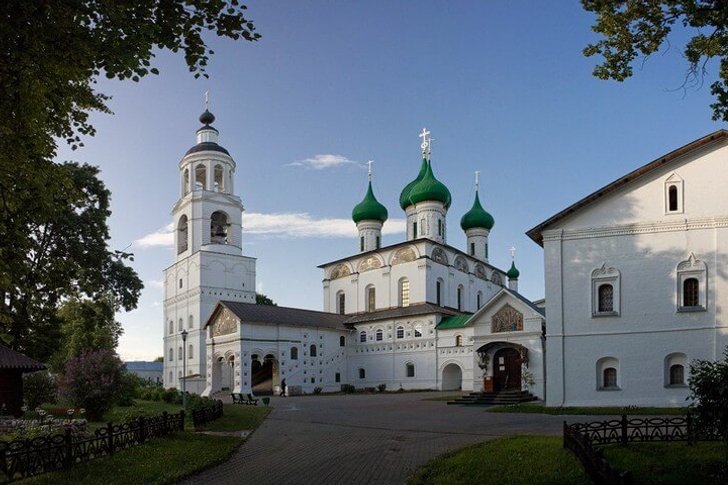
Kazan Convent
The monastery was founded in one of the most difficult historical periods of the Russian state - during the Time of Troubles. Its history began in 1610 with the construction of a wooden church, near which nuns from the burned-out Nativity Monastery soon settled. Here the sisters were able to find a long-awaited shelter. Until the second half of the 18th century, all the buildings of the monastery complex were wooden, only in the 1830s. the first stone cathedral appeared.
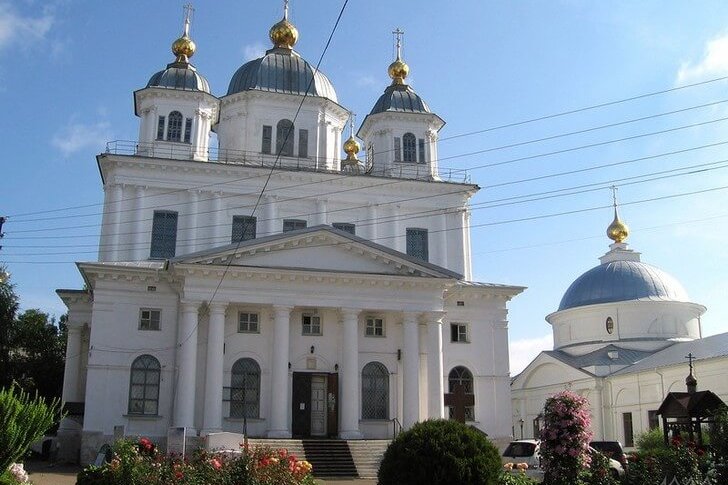
Vlasievskaya Tower and Znamenskaya Church
The Vlasievskaya Tower is a defensive structure of the 17th century, one of the first stone buildings in the city. Initially, there were six stone towers in the system of city fortifications. Over time, a chapel was added to the building, which grew into the Church of the Sign and made up a single architectural complex with the tower. The church acquired its modern forms only in 1897, before that it was rebuilt five times.

Volga tower
Another stone fortification of Yaroslavl, preserved from the 17th century. The tower was built of brick on the banks of the Volga. Until 1711, it was covered with a wooden tent, which burned down in a fire. At the beginning of the 19th century, the Volga Gates were added to the western facade, and the building was also completed to accommodate the arsenal. At the end of the 19th century, the building was adapted for a tavern; nowadays, a cafe is open in the tower.
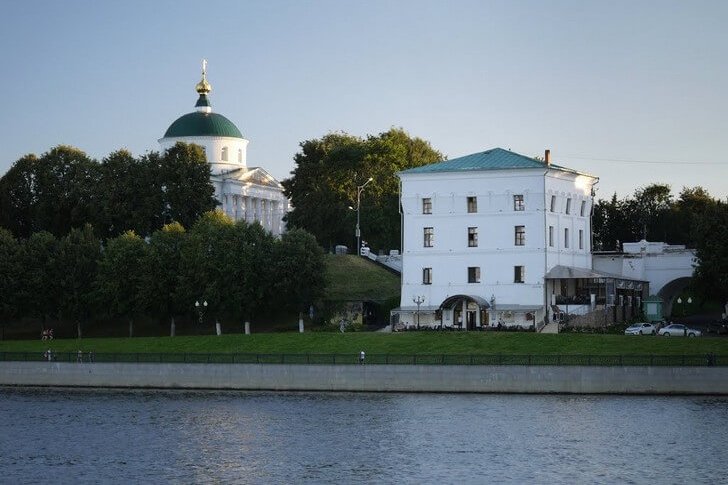
Metropolitan Chambers
An architectural monument of civil engineering, erected at the end of the 17th century. The chambers were built for the Metropolitan of Rostov and Yaroslavl. The building is a two-story stone manor, inside which reception rooms and living quarters were organized. At the end of the 18th century, the first vice-governor of Yaroslavl was located on the territory of the chambers. Catherine II also repeatedly stayed here. Today, the estate houses a museum of ancient Russian art.
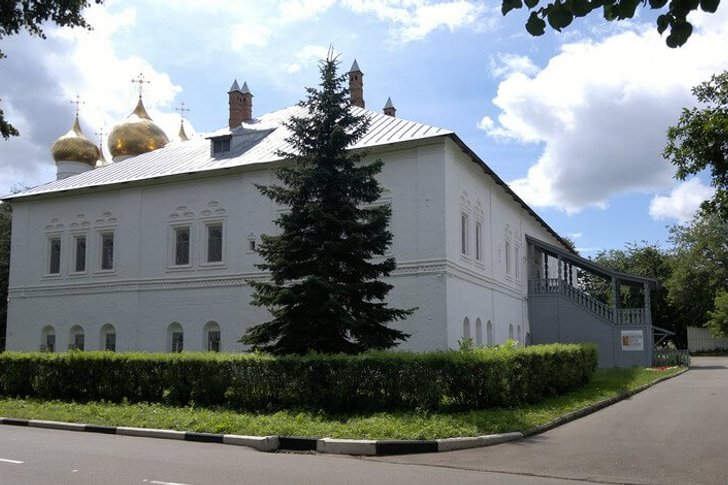
Governor's house and garden
The governor's estate was erected in the 19th century as the residence of the Yaroslavl mayor. At the same time, a garden was planted around the house. The mansion was often used by Russian emperors as a travel palace; all the rulers from Alexander I to Nicholas II visited here. Since 1970, the Yaroslavl Art Museum has been located on the territory of the complex, where collections of icons, Russian avant-garde and primitivism are exhibited.
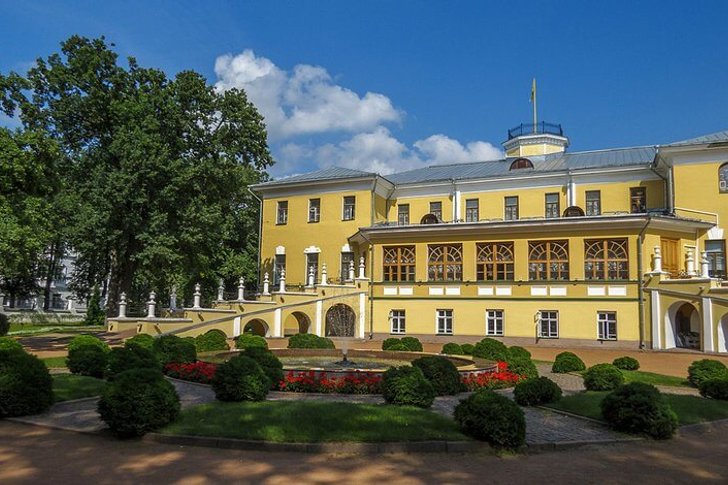
Museum-reserve N.A. Nekrasov "Karabikha"
Memorial Museum in the village of Red Weavers, dedicated to the life and work of N. A. Nekrasov. The exposition is located in the estate of the middle of the 18th century, built by order of Prince N. S. Golitsyn. In 1861, the building was acquired by N. A. Nekrasov. The writer lived here until 1875. In 1918, the mansion went to the state. It housed the directorate of the collective farm. In 1946, a decision was made to restore and organize a memorial museum on the estate.
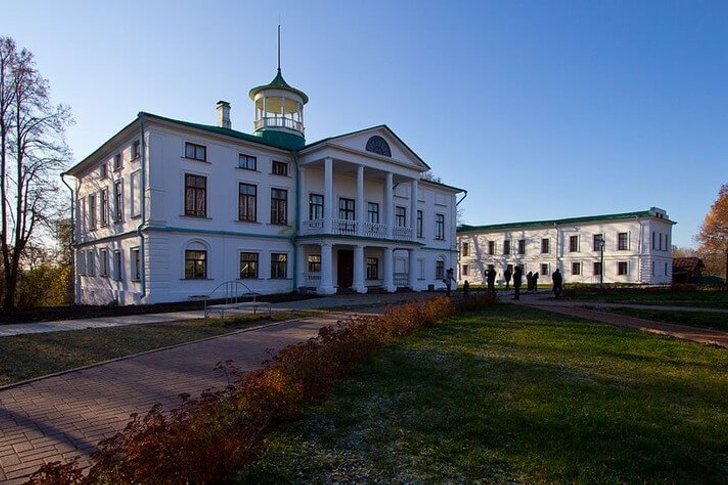
Museum of the history of the city of Yaroslavl
The museum opened its doors to visitors in 1999. The exposition is housed in a historic mansion of the late 19th century, which once belonged to the merchant Kuznetsov. In 1919, the building was taken over by the city authorities. Over the course of 70 years, its purpose has changed - it housed public utilities, a hospital, an orphanage. After the repair in 1985, the premises were given over to a branch of the Yaroslavl Museum-Reserve. Since 1999, an independent exposition has been opened here.
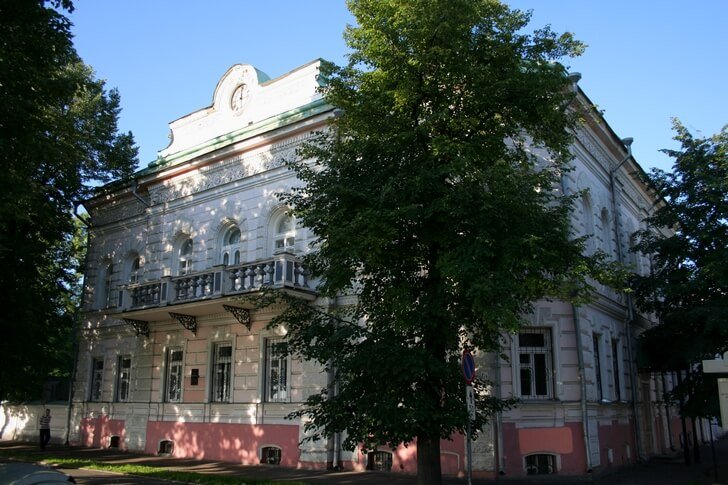
Museum "Music and Time"
Private collection founded in 1993 by D. Mostoslavsky, a local illusionist. The exposition began with a small collection of bells and coins. Over time, the small museum has grown into a complex, which exhibits a wide variety of collections from horseshoes to samovars and porcelain dishes. Around the museum building there is a landscaped garden with stones and sculptures.
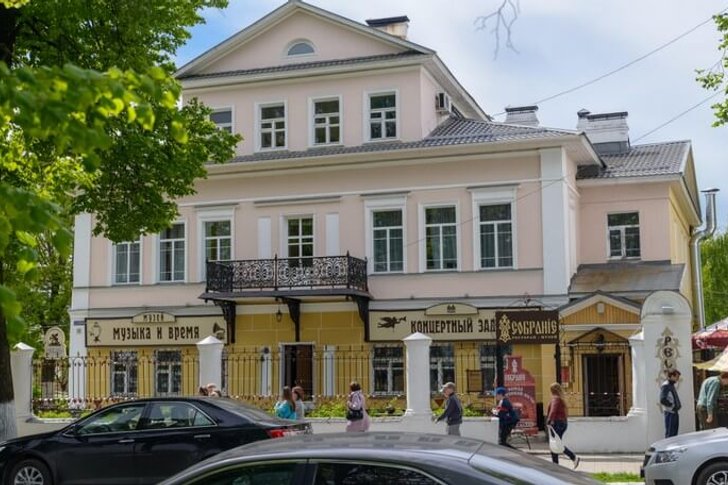
Russian Drama Theater named after F. Volkov
The oldest drama theater in Russia, which was founded in the middle of the XVIII century. The history of the scene began with an ordinary barn, where the talented son of a merchant F. G. Volkov began to arrange amateur performances in which he involved friends. The first theater building appeared in 1751. The new premises were built in the 1840s, by which time the Yaroslavl Theater had become famous throughout Russia. The modern theater building appeared in 1911.

Planetarium of the Center. V. Tereshkova
The planetarium was opened in 2010 on the eve of the 1000th anniversary of Yaroslavl. It is a modern complex, which includes a museum, an interactive classroom, a 5-D attraction, a cafe and a hall with a starry sky projector. In the center of V. Tereshkova often holds scientific conferences, and an astronomical circle also works. The building of the planetarium is built in a modern futuristic manner; from afar, it resembles a spaceship.

Monument to Yaroslav the Wise
The monument is located on Epiphany Square. It was installed in 1993, A. Bobovich, N. Komova and O. Komov worked on the project. Prince Yaroslav the Wise is depicted with a lowered sword in one hand, which demonstrates his peaceful disposition, and with a model of the city in the other. The statue faces the Yaroslavl highway. In the XIX century in Yaroslavl there was a monument in honor of the founder, but it was dismantled by order of Nicholas I.
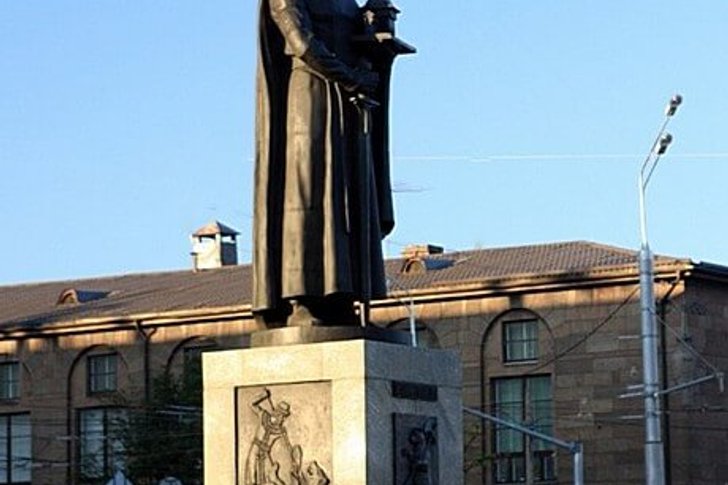
Park on Damansky Island
A green zone located at the confluence of the Kotorosl with the Volga. There are many parks and squares in Yaroslavl, where the townspeople like to spend their time relaxing, the park on Damansky Island is one of the most popular. Previously, on the site of the park there were city gardens, which could only be reached by boat. In 1944, it was decided to create a recreational zone in this place, after which active planting of trees began.
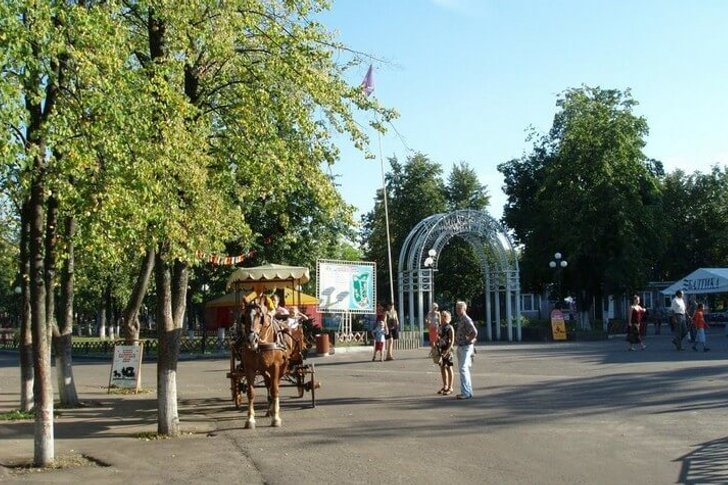
Yaroslavl Children's Railway
A railway line that completely imitates real tracks with rolling stock, wagons and stations. The first such attraction appeared in 1946, when the length of the road was 5 km. Children are the employees of the railway line. They are responsible for the movement of trains, the serviceability of locomotives, the schedule and the condition of the tracks. In 2001, the Museum of Extraordinary Journeys was opened at one of the stations.
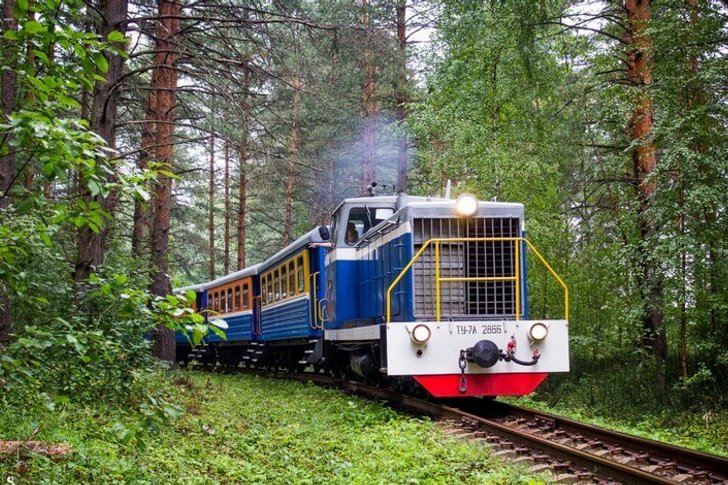
Yaroslavl Dolphinarium
The Dolphinarium is located in the village of Dubki in the Yaroslavl region. Dolphins, fur seals and whales live on its territory. The Dolphinarium is a full-fledged entertainment complex with a variety of show programs, several restaurants, an amusement hall and a hotel with a swimming pool. Special excursion tours with a visit to the dolphinarium are organized from the cities of Central Russia.

Yaroslavl Zoo
One of the largest zoos in Russia, located on an area of 120 hectares. It was opened in 2008. About 250 species of animals (more than 1650 individuals) live in the menagerie. The zoo has created comfortable conditions for animals, as they are not kept in narrow cages, but are allowed to walk over a vast territory. There is a petting zoo and an exotarium with tropical species.

Demidov garden
The central city square, located on the square where military parades were held in tsarist times. In the center of the park there is a column in honor of P.G. Demidov. The garden was formed in 1885 at the expense of the city chief I.A. Vakhrameeva. At first, the place was named after him, but the people used the name "Demidovsky Garden" because of the column. The garden was completely restored in 2005.
